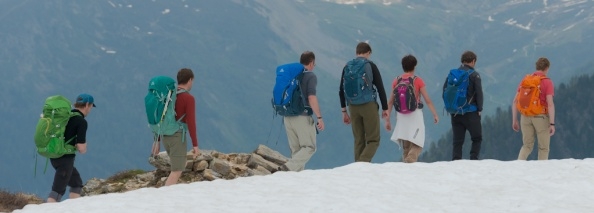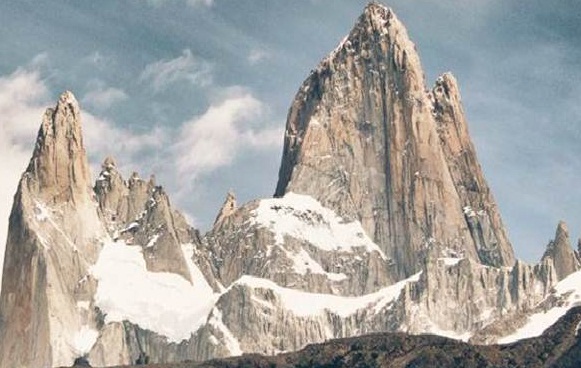Gregory 2012-2014 - Sport Handelsagentur Sascha Rietzschel Gregory Thermarest MSR Seal Line Platypus Pack Towel E-Case Rock Pillars Ocun
Hauptmenü
- Homepage
- Agentur
- RP Climbing
- OR Outdoor Research
- Cascadedesigns IR
- Gregory by Samsonite
- Safetyrecreation
-
News
- Messen
- Veranstatungen
-
Sponsoring
- 2012
- Neuheiten
- Meetings
- Presse
- Service /Rekla.
- AGB Impressum
- Kontakt/Büro
- History
Gregory 2012-2014
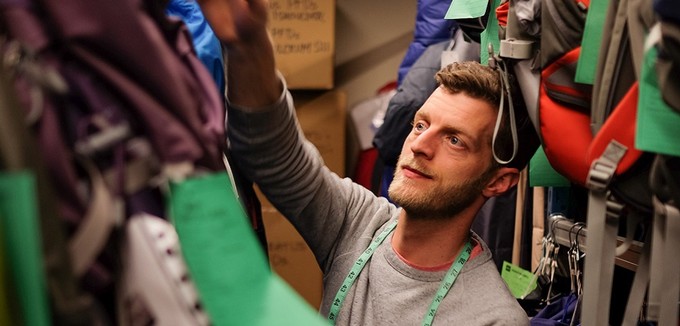
Who do you look to in the bags world? Who does rad stuff (brands or designers)?
In terms of the big brands, I think Gregory are killing it right now
Design Heads :: Interview with James Brittain
In our Design Heads series we get inside the heads of designers who really know their stuff and have been in the industry long enough to have picked up nuggets of gold – nuggets that we mine just for you. So who have we snagged this time round to share their insights and inspirations? None other than James Brittain, the Senior Equipment Designer at Mountain Equipment Co-
-
Are there any key insights that guide your stuff? What do you know that most others haven’t realized?
I like to remember that not everyone has a different bag for every different activity that they do. It’s often the case that the bag that takes you hiking at the weekend also takes you to work during the week.
What are your main channels for your creative inspiration?
I try to be open to inspiration as much as possible but I definitely gravitate to other disciplines when I’m stuck. Things like furniture and automotive design for form, and footwear and apparel for construction. I like to start every day catching up on blogs and online content, so tools like Pinterest and Tumblr are great for a quick creative hit.
Where is your most creative space and why?
I generally do my best work either after hours at the office, or in my own space at home. I was always the guy who got things done late at night when there are less distractions and I’ve continued that pattern to date.
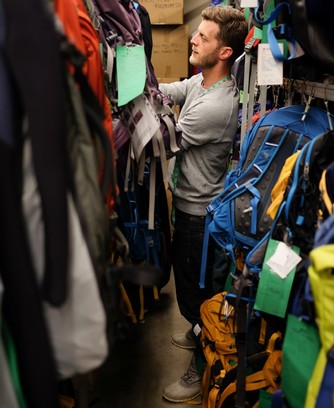
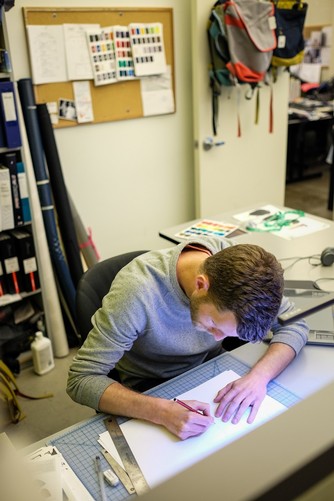
Any unusual places or circumstances where you got an idea for a new innovation in carry? Do you get a lot of ideas in the shower or the corner market foraging for organic dragon fruit?
I tend to find ideas all over the place. Mostly while travelling and moving around, interacting with packs/luggage in real life situations. A lot of the ideas come out once I get home and start reflecting on where I’ve just been and the activity I’ve been doing.
Who do you look to in the bags world? Who does rad stuff (brands or designers)?
In terms of the big brands, I think Gregory are killing it right now. Their stuff has been strong for the last few seasons and I’ve watched the brand really re-
Are there any trends or things folk do in carry that drive you nuts?
Over-
You’ve worked with a number of different teams and brands. What are some of the ingredients that help you make better designs? Is it about good managers or good customers?
I read an article about working culture just recently and would put that up as the key. If the culture in a team is collaborative, inclusive and progressive, then all the other things seem to fall into place. For sure, there are infinite other nuances to creating good carry but if everyone is trying to achieve the same thing, that’s when the good stuff happens.
What are your tools of the trade?
I always start with paper/pencil. I work much quicker that way and am less precious about ideas. From there I’ll get into illustrator and/or sewing.
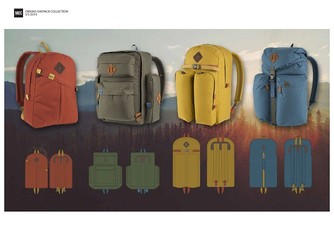
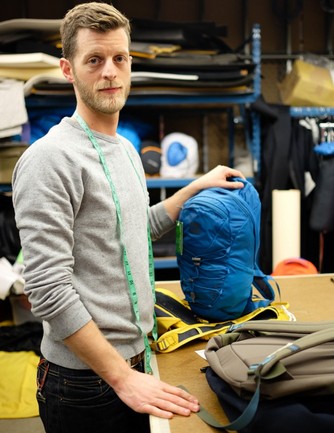
What materials do you most like to work with? Are there any new materials you’re experimenting with? Anything that will break the time-
We typically work with all the traditional nylons and polyesters that you would expect, but you might be surprised at the sheer number of options you have when selecting them. Recently I’ve been doing a lot of work on our lifestyle collections and it’s been fun to dive into some non-
What sort of brief do you love to get?
My favourites are the ones where there is no definite outcome from the start. Not 100% open-
Do you like working as a team or going solo?
Team every time. By far and away the best situation for me is when collaborating in a small team of fairly like-
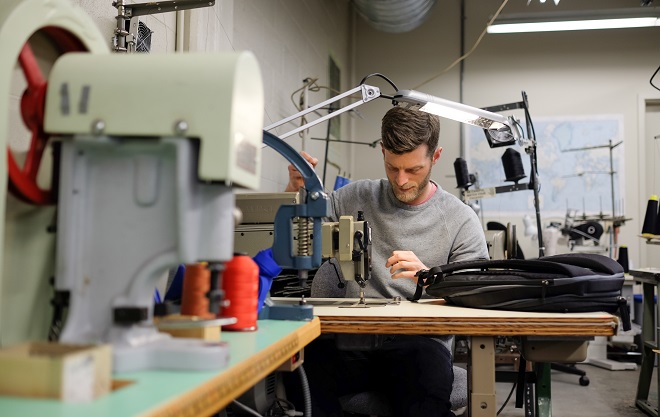
Do you have to go to the maker to make a good bag? Can carry design work remotely?
I think you can make a good bag remotely, but in my experience, you can only make a great bag once you get on the ground with the manufacturer. There are a lot of unique challenges in construction that can only be overcome when you all get around the same table and solve things together.
How do you test your product? What do you look for when testing?
We have a team of trusted individuals whose opinions we value really highly when it comes to testing. They range from ambassadors, to staff members, to everyday users we have met and established relationships with. The list is forever changing but the core remains the same.
How many prototypes do you go through before release?
Totally depends on the complexity of the project but we average 3-
What products are you most proud of?
At MEC, we have a lot of established products that have stood the test of time. The products I’m most proud of are the ones that have challenged the status quo and opened up new categories for us. For example, the Agens collection was a big step for a ‘Mountain’ brand but opened the door for a bunch of exciting new lines coming down the pipe….
Do you have any favorite tips or habits for carrying better, either EDC or when traveling?
Roll, don’t fold.
You’ve been in the game for a long time. What’s the most important thing you’ve learned about design and secondly about the carry industry?
Barrett touched on this in his interview, but everything is a moving target when it comes to design. Be it technology, trends or activities…everything is always jostling for position. The most important thing I’ve learned is to keep questioning your pre-
What carry product (of your own creation, or anyone else’s if you feel like being generous) do you enjoy the most? What makes it enjoyable?
My buddy got an older Leica camera with the made-
Can we see a pocket dump?
Sure. It’s pretty standard for most people I think: phone, keys, wallet, bike lock, lunch, notebook, pen.
While you’ve got the camera out, would you mind taking a photo of your workspace, and perhaps identifying any tools or personal items that help you most in your creations? Specific drafting pencils or a lucky charm or an explanation of why your workspace is so tidy and ours is…something not describable using the terms of polite conversation?
My desk at the office is pretty cluttered but is the opposite at home. The setup is similar though – I like to have a space to draw and spread things out that is away from the computer and then pinboards etc. to collect all the clippings and new tech that comes by.
What bags do you run with daily?
I generally try to use one of my recent developments, to give it some field time and also because that’s usually the one I’m most excited about. Day-
What kinds of hobbies do you pursue when you aren’t creating wonderful new carry products? Have you created any carry craft specifically for that hobby, or do you intend to in the future?
When I’m not at work, you’ll find me on my snowboard in the winter and road-
Are there any materials you used to like, but now find impractical for your creations?
Hypalon. I used to use it a lot but the environmental impact of it means we don’t use it in our products at MEC anymore. That environmental responsibility is a huge driver for the whole team.
What wouldn’t the layperson know is essential to a good carry product? We all tend to appreciate convenient pockets, for example, but is there anything that we wouldn’t notice about an excellent carry product off-
Probably the price! A huge part of commercial carry design, and any other design, is to get that innovation delivered at the price that it needs to be. I think all carry designers rub up against that particular challenge in our industry.
If you weren’t making carry products, what would you likely be doing for a profession? Or do you have another passion that your carry creations help you enjoy more fully?
I’d love to say I’d be some kind of athlete but realistically I think I’d be travelling around trying my hand at anything and everything. Just as long as I could be creative, I’d be okay.
What’s next for you?
Literally: off to Asia in a few days to see our factories and work on the new designs.
Brands: MEC, Mountain Equipment Co-
Michael Knispel
Managing Editor
The newest addition to the team, Mike enjoys polos with embroidered ducks and hot cups of milo.
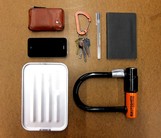
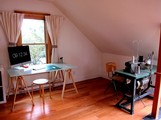
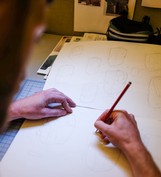
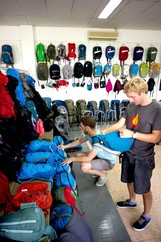
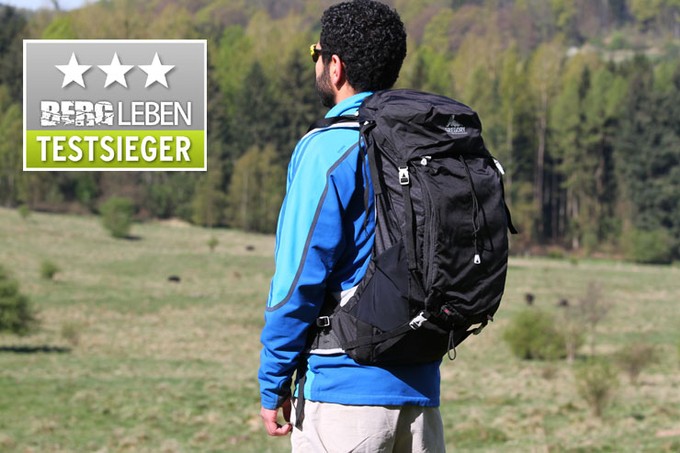
Gregory Z35
bergleben.de am 25.06.2014 -
Herstellerbeschreibung
Wahrscheinlich der perfekte Tagesrucksack: Der Z35 bietet Platz für all Ihre Ausrüstung und bleibt dank des Cross-
-
-
-
-
-
-
-
-
-
-
-
-
-
Testermeinung
Gregory lieferte mit dem Z35 einen großen Rucksack mit gemessenen 30 Liter Volumen im Hauptfach ein. Mit etwas über 1,5 Kilogramm Gewicht gehört er zu den drei "schweren" Rucksäcken im Test, der Kaufpreis von 130 Euro ist im Vergleich mit den anderen Modellen eher teuer.
Der Z35 ist schon auf den ersten Blick ein funktioneller Wanderrucksack mit zahlreichen Features und hochwertiger Verarbeitung. Das Cross-
An Taschen und Features mangelt es dem Gregory Z35 nicht. Zwei Taschen am Hüftgurt, eine offene Fronttasche für Wäsche oder Schuhe, eine kleine Fronttasche mit Reißverschluss und integriertem Regencape, eine große Deckeltasche, zwei gut erreichbare seitliche Stretchtaschen für Getränkeflaschen und natürlich das Haupftfach mit abgetrenntem Fach bieten jede Menge Stauraum. Ebenfalls spitze: Der Z35 ist nicht nur ein Top-
Fazit:
Da bleibt nicht viel zu sagen außer: herzlichen Glückwunsch dem Testsieger! Der Z35 überzeugt einfach in jeder Hinsicht und ist für das Wandern wie auch für Hochtouren bestens geeignet. Bequem, stabil, super zu fixieren, gute Lastaufnahme, gutes Tragesystem, ergonomisch geformt, viel Platz und dabei weder übermäßig schwer noch übermäßig teuer. Ambitionierte Wanderer können mit diesem Rucksack wenig falsch machen!
GreGory Contour 60 £175
With a wealth of innovative features, does the Contour 6O set new standards? 72 Trail april 2013 The driving philosophy behind Gregory rucksacks is the same today as it was when Wayne Gregory made his first product in the late 1970s: the pack must maintain its comfort and stability by effectively tra
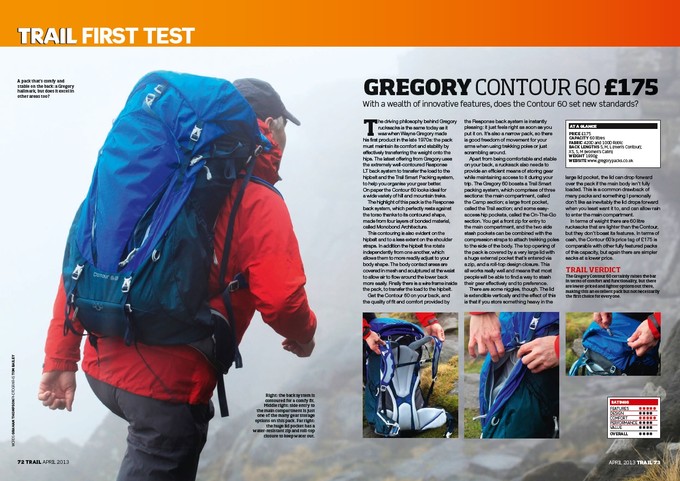
Gregory auf der OutDoor in Friedrichshafen

Auch dieses Jahr präsentiert sich Gregory wieder auf der OutDoor in Friedrichshafen, dem Branchentreffpunkt der Outdoorbranche. Und natürlich wird es Neues geben -
New Packs presented and tested on Sales Meeting in Chamonix
For the annual summer sales meeting, the Gregory Europe Sales Team came together last week in Chamonix in the French Alps. U.S. product designers John Sears (Director of Product Development) and CJ Whittaker presented the new product lines to the team during the two and a half days of meeting. Besides a thought-
All new products can be checked out by the public for the first time on OutDoor show at Friedrichshafen in July.
